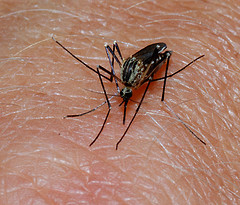Traveling with Pets, Part Three: Automobiles
Share

 Here we are at the final part of our series on traveling with your pets, and although we’ve covered traveling in a vehicle in the past, we wanted to give you some more handy tips to make traveling easier on everyone! (Be sure to read the Checklist for Pet Travel Success for in-depth information).
Here we are at the final part of our series on traveling with your pets, and although we’ve covered traveling in a vehicle in the past, we wanted to give you some more handy tips to make traveling easier on everyone! (Be sure to read the Checklist for Pet Travel Success for in-depth information).
Cats!
They don’t seem as inclined to travel as their canine adversaries counterparts, but traveling with cats doesn’t have to be so bad. In our experience, after a few hours, cats get over their initial jitters pretty quickly, and it’s important for you to remain calm and be prepared to stop a few times before your an hour into your trip to make adjustments.
Tips:
- Line your cat’s carrier with training pads (or other absorbent material—we suggest training pads due to the fact that they’re best at locking in wetness) to keep clean up as simple as possible.
- Purchase a container designed to contain odors, and large enough to hold dirty training pads, paper towels, and other soiled, disposable items. We suggest using those suitcase-sized plastic zipper bags you can usually find in any department or grocery store in the same aisle as sandwich bags and plastic wrap.
- Pack plenty of plastic bags—they’ll come in handy in lots of ways. We like using Ruffies 4-gallon sized bags
. They come with 60 in a roll, and usually cost less than $4 at the store.
- Train your cat. Your cat should stay in their carrier when the vehicle is moving, but you’ll want to have a litter box for them to use when the car is stopped and everyone is getting a chance to stretch their legs. While you can buy disposable litter trays, why not hunt down the top of a printing paper box? Just line it with a plastic liner and fill it with cat litter. Packing a spare lid wouldn’t hurt either.
- Bring along some toys! Even just a few minutes of play before hitting the road again will help your cat feel more at ease, and help you feel more alert. It’s a win-win.
Dogs!
Let’s leave the visions of dogs hanging out of car windows with their tongues lolling out to the movies. Make sure you keep your dog safely harnessed or crated at all times when the vehicle is in motion. If you’re not sure of the best way to secure your dog, read our article on the different ways you can keep your dog safe: Securing Pets for Travel.
Tips:
- Bring something to chew on. Everyone likes a road trip snack, and why not get something new for your dog? Perhaps a Kong chew toy, or something similar, that will keep their attention for more than 10 seconds.
- Try spending some time in the backseat with your dog. You could use this time to brush them, give them a quick bath with some grooming wipes, or just plain sit and enjoy some quiet time together.
- Work on your “stay” command before the trip. Even if your dog already knows this command well, brushing up is never a bad idea. This simple command could prevent all kinds of troubles. If you’ve ever tried to clean up a pile of vomit on the floor of the car with your dog snorfling in your ear, or worse, hopping down into the mess—then you can already see the wisdom in making sure your dog is a top-notch “stayer.”
- Take interactive breaks. When you stop to stretch your legs and take the dog to do his or her “business,” make a portion of that time a little more challenging by jogging, walking through an area that’s a little more difficult to navigate, play a game of hide and seek with another travel partner, or any other activity that you can manage that will give you all more exercise—just remember to keep the leash on!
- Talk to your dog during the trip. It may sound silly (well, for our readers it probably doesn’t sound silly), but including your dog in conversations while you drive along will pique their interest and keep them from feeling ignored. If it’s just you and Fido—why not put on some music and sing together?
What happened the first time you traveled with any of your pets? What sorts of things did you wish you had thought of beforehand? Let us know in the comments below.










